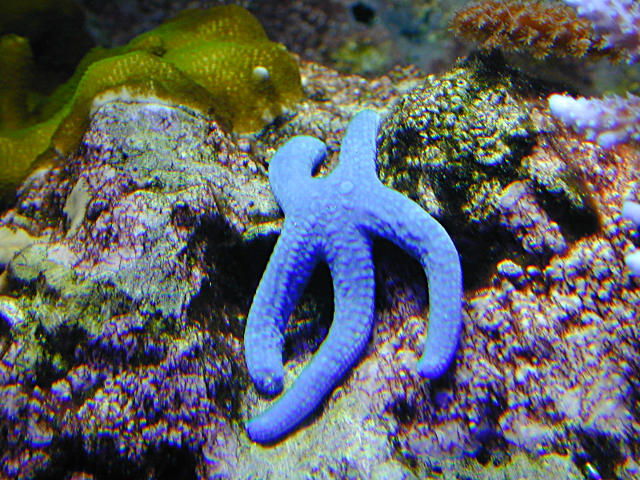
Blue Linkia Sea Star - Linkia laevigata
Picture taken May 1999, Sony Mavica FD91 digital camera Purchased: May 6th, 1999. Nickname: Blue Sea stars in the genus Linkia are amoung the few stars acceptable for reef aquariums. They are non-selective surface grazer from the Indo-Pacific and can survive on a diet of aquarium detritus and debris.
Linkia sea stars are known to ship very poorly. They often have very high mortality rates. You need to acclimate all marine critters very slow, but take extra time with this one. I recommend:
|

Blue Linkia Sea Star - Linkia laevigata
Picture taken September 2001, Nikon CoolPix 950 Digital Camera, No Flash If you follow these steps and you still loose the sea star chances are it was already in bad shape from mishandling or poor acclimation techniques prior to your purchase. Update: 08/10/1999 - The linkia was out on the front glass this morning. I took the opertunity to measure it tip to tip. It measured just under 4 inches. I wish I wrote down how big it was when I got it to see if has grown or stayed the same size. Update: 07/15/2000 - I measured the linkia again and it was exactly 4 inches in size from tip to tip. Very slow growth for this critter over the last year. Update: 09/15/2001 - This little blue star seems to be in trouble. I keep finding him flipped over on its back as if it fell off the glass or rocks. Sure enough as he tries to climb, an arm lets go one by one until it falls down. No signs of turning white, no physical damage. Update: 12/04/2001 - I haven't seen this critter in 2 months. I assume whatever happened to him was fatal. |
